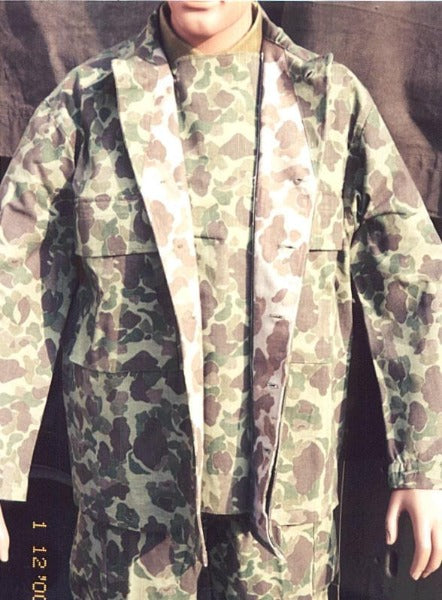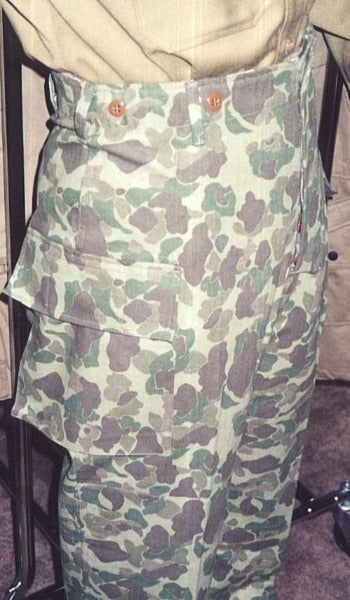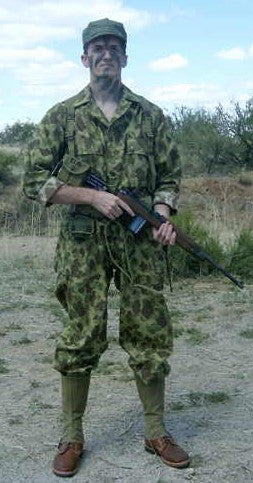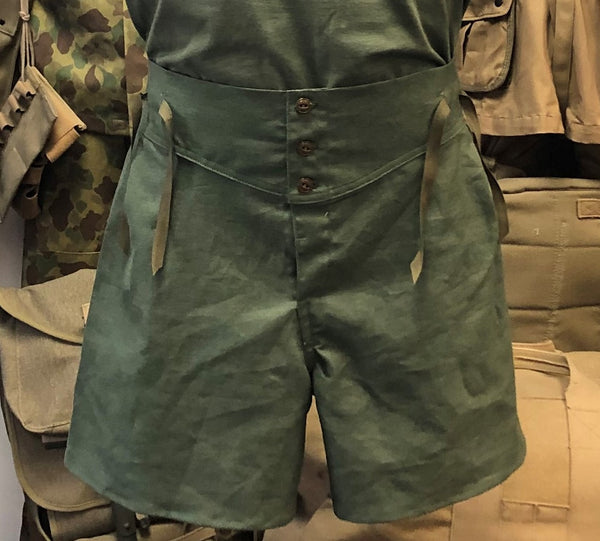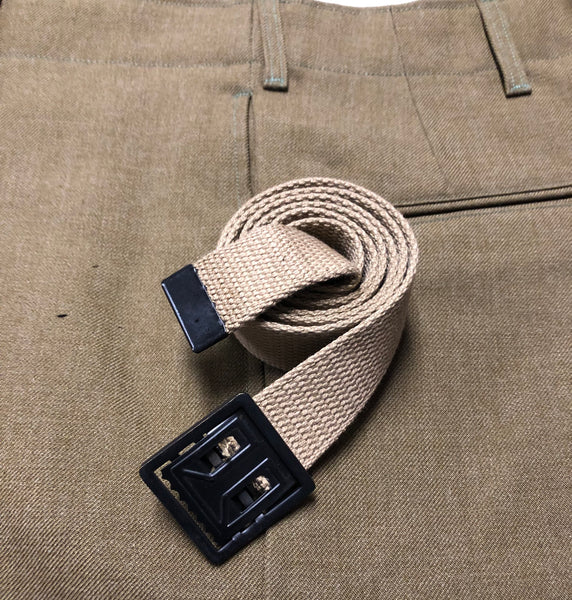Uniform, Herringbone Twill, Camouflage

It appears that the U.S. military introduced camouflage into their uniform mass issue stocks but only very briefly during the 1943/44 campaigns of WWII. The Marines issued camouflage herringbone twill utilities based on their P41 design initially for the invasion of Tarawa in 1943 and they were slowly fazed out. The Army did the same in the fall of 1944 during the bocage fighting in the French countryside. The Army version was the M1942 fatigue uniform pattern with large cargo pockets on the jacket and trousers. The camouflage pattern was so popular that retail stores and mail order outlets produced hunting attire in the exact same spot pattern in the 1950s and early 1960s. US Army camouflage uniforms also were sold surplus to foreign militaries such as French forces such as was seen operating in French Indo-China. Duck-Hunter camouflage suits were bought by the CIA from Sears Roebuck and issued to Cuban Freedom Fighters for the ill-fated Bay of Pigs Invasion in 1961.
Technically speaking, the fabric that WWII uniform sewing contractors used to produce either the Army or Marine Camo HBT uniforms was the same and modeled after the Army spec HBT fabric. That's why the camo colors were identical and only the uniform styling was different. We duplicate their efforts entirely with our American made custom woven HBT fabric. The fabric was printed in a green color scheme on the right side of the HBT fabric, and a tan color scheme on the reverse side. Using our M1942 HBT fatigue uniform as the pattern we add special accents as was used on original uniforms such as protective flaps and fly panel, knee and elbow reinforcements, hidden buttons on pocket flaps, and lapel contrasting. Our uniforms are produced using our durable yet comfortable 100% cotton herringbone twill printed in the authentic WWII "arbor" camo spot pattern. We use mercerized and glazed 100% cotton thread matched for color and gauge to stitch together the garment. We use the same type of sewing machines to duplicate the stitch work of the original garments. Buttons are solid cast in the authentic color. Both jackets and trousers even include authentic WWII era QM inspector labels with sizing and contract info stitched in locations as historically done in the real garments. Despite the shortcomings of the colorfast and fading issues on original uniforms our uniforms hold up much better under use and will last as you memorialize troops fighting the bitter Normandy Breakout or Falaise Pocket phase of WWII.
